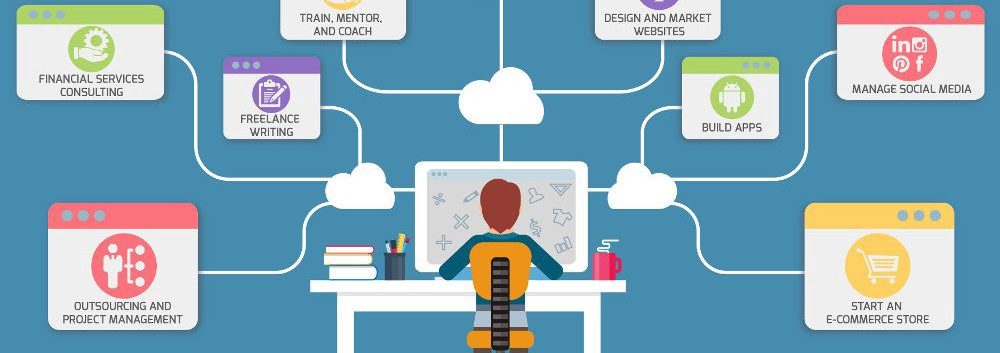The advent of e-commerce has revolutionized the retail landscape, fundamentally changing the way consumers shop and businesses operate. In the digital age, e-commerce has emerged as a powerful force, transforming traditional retail in profound ways and reshaping the entire consumer experience. This article explores the multifaceted impact of e-commerce and the ways in which it is driving the evolution of retail in the digital era.
1. Global Reach and Accessibility
E-commerce has transcended geographical boundaries, enabling retailers to reach a global audience with unprecedented accessibility. Traditional retail often faced limitations in terms of physical reach, but e-commerce platforms have democratized access to products and services, allowing businesses to tap into a diverse customer base without the constraints of brick-and-mortar establishments. The ability to cater to a worldwide market has opened up new avenues for growth and expansion, propelling traditional retailers into the international arena and reshaping the concept of retail on a global scale.
2. Seamless Omnichannel Experiences
E-commerce has blurred the lines between online and offline retail, giving rise to seamless omnichannel experiences that intertwine digital and physical shopping journeys. Traditional retailers have embraced omnichannel strategies, integrating their online presence with in-store experiences to provide customers with cohesive, personalized interactions across various touchpoints. The convergence of e-commerce and traditional retail channels has led to a more interconnected shopping environment, where consumers can effortlessly transition between online browsing, in-store exploration, and post-purchase engagement, fostering a holistic and integrated retail ecosystem.
3. Data-Driven Personalization
The digital age has empowered retailers to leverage consumer data and analytics to deliver personalized shopping experiences. E-commerce platforms capture a wealth of customer insights, including browsing behavior, purchase history, and preferences, which traditional retail channels often struggle to collect and utilize effectively. By harnessing the power of data-driven personalization, retailers can offer targeted product recommendations, tailored promotions, and individualized content, creating a more engaging and relevant experience for consumers. The interplay of e-commerce technology and personalized retailing has redefined the way businesses connect with their audience, driving customer loyalty and satisfaction.
4. Disruption of Supply Chain and Logistics
E-commerce has catalyzed an evolution in supply chain management and logistics, reshaping traditional retail operations to meet the demands of digital commerce. Retailers are reimagining their inventory management, order fulfillment, and last-mile delivery strategies to accommodate the shift towards online shopping and the increasing expectations for fast, efficient shipping. The integration of advanced logistics technologies, such as automation, robotics, and artificial intelligence, has revolutionized the way products are sourced, stored, and transported, optimizing the entire supply chain and enabling retailers to adapt to the dynamic landscape of e-commerce.
5. Customer-Centric Innovation
In the digital age, e-commerce has fueled a culture of customer-centric innovation, prompting traditional retailers to reimagine their products, services, and brand experiences. The pressure to compete in the digital marketplace has incentivized retailers to prioritize customer satisfaction, convenience, and value, leading to innovative solutions that enhance the overall shopping journey. From virtual fitting rooms and AR-powered visualization tools to AI-driven chatbots and voice-activated shopping assistants, e-commerce has inspired a wave of transformative technologies that are reshaping traditional retail paradigms and elevating the standard of customer-centric offerings.
6. Adaptive Business Models
E-commerce has compelled traditional retailers to adapt their business models to navigate the shifting dynamics of the digital age. Brick-and-mortar stores are embracing new formats, such as pop-up shops, experiential showrooms, and interactive flagship locations, to complement their online presence and engage with tech-savvy consumers. Moreover, the emergence of direct-to-consumer (DTC) brands and digitally native vertical brands (DNVBs) exemplifies the transformative impact of e-commerce on retail, as these disruptors challenge traditional distribution channels and resonate with modern consumer preferences for digital-first shopping experiences.
The rise of e-commerce is undeniably transforming traditional retail, reshaping the industry through global accessibility, omnichannel fusion, data-driven personalization, supply chain disruption, customer-centric innovation, and adaptive business models. As e-commerce continues to redefine the retail landscape in the digital age, traditional retailers are embracing digital transformation to remain competitive, drive innovation, and meet the evolving expectations of consumers in an era where the boundaries between online and offline commerce have become increasingly intertwined.





